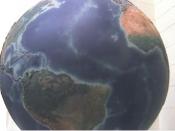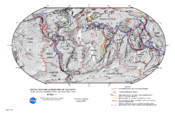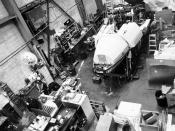The Theory of Plate Tectonics
The Earth's crust is cracked into twenty or so individual pieces called plates. Continents lie on top of the plates. These plates float on the molten rock or magma from the mantle and move slowly. The idea of moving plates is called the Theory of Plate Tectonics, which was first developed by Harry Hess in 1962. The theory explains the how and why behind earthquakes, mountains and volcanoes as well as how centuries ago similar animals could have lived at the same time on what is now separated continents. There is much evidence supporting this theory.
The earliest world maps showed that continents joined together like a jigsaw puzzle. As centuries past the maps showed that the continents had drifted apart to where they are today. This is called the theory of continental drift, discovered by Alfred Wegener. [See diagram 1]
It is proven that continents have drifted away from each other.
If you look at a map you can tell that the western portion of the African continent and the Eastern coast of the South American continent fit together like a jigsaw. About 300 million years ago a continental ice sheet covered parts of South America, southern Africa, India, and southern Australia. Glacial lines on rocks show that glaciers moved from Africa toward the Atlantic Ocean and from the Atlantic Ocean onto South America. Such glaciation is most likely if the Atlantic Ocean was missing and the continents joined.
Certain rocks of the ocean floor are magnetised in the direction of the Earth's magnetic field. The rocks have magnetic 'stripes'. Examination of these rocks has revealed that the earth's magnetic field has reversed its direction many times. The stripes show this reversal, indicating that the youngest rock is next to the ridges while...


